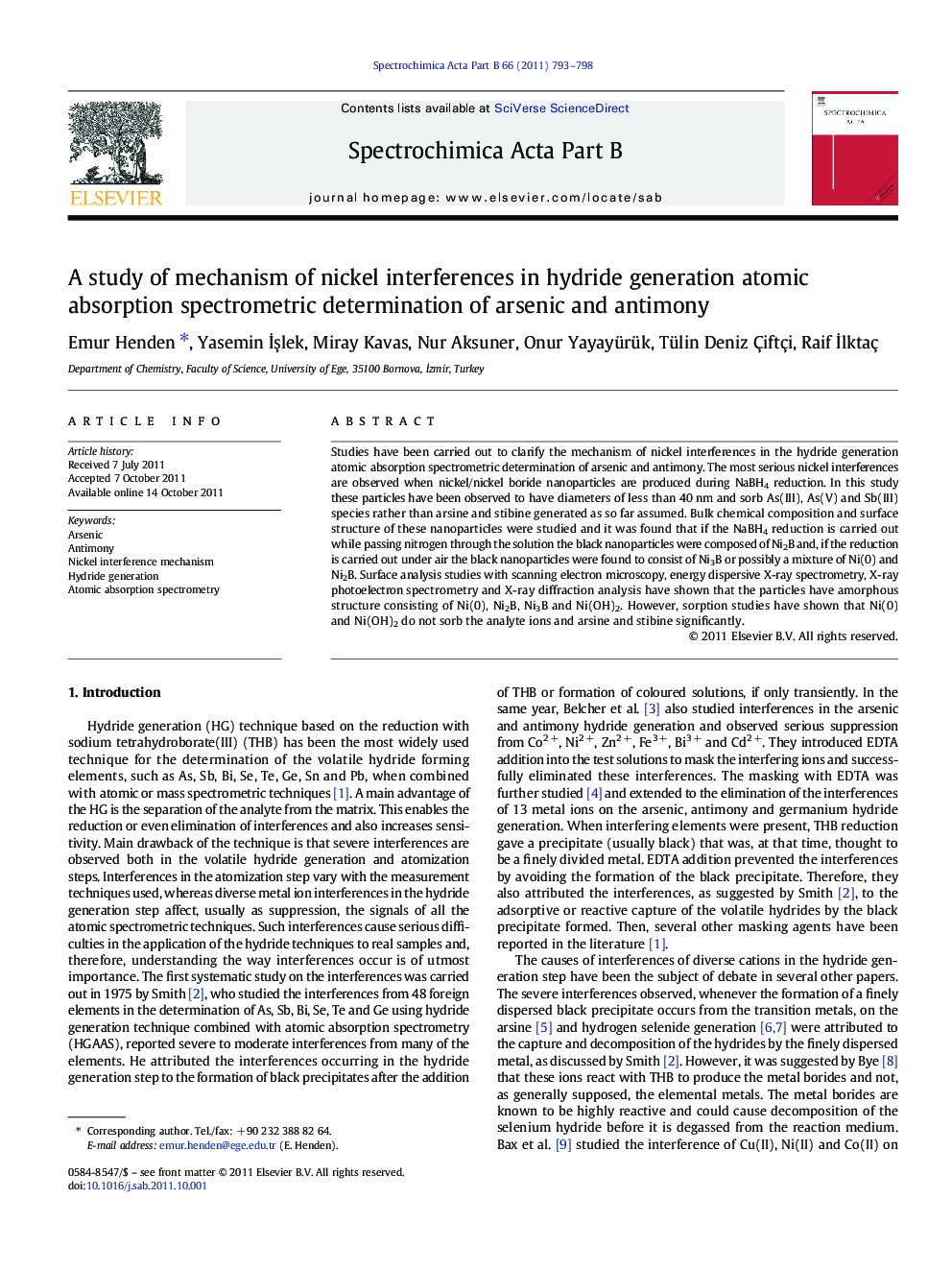| Article ID | Journal | Published Year | Pages | File Type |
|---|---|---|---|---|
| 1240109 | Spectrochimica Acta Part B: Atomic Spectroscopy | 2011 | 6 Pages |
Studies have been carried out to clarify the mechanism of nickel interferences in the hydride generation atomic absorption spectrometric determination of arsenic and antimony. The most serious nickel interferences are observed when nickel/nickel boride nanoparticles are produced during NaBH4 reduction. In this study these particles have been observed to have diameters of less than 40 nm and sorb As(III), As(V) and Sb(III) species rather than arsine and stibine generated as so far assumed. Bulk chemical composition and surface structure of these nanoparticles were studied and it was found that if the NaBH4 reduction is carried out while passing nitrogen through the solution the black nanoparticles were composed of Ni2B and, if the reduction is carried out under air the black nanoparticles were found to consist of Ni3B or possibly a mixture of Ni(0) and Ni2B. Surface analysis studies with scanning electron microscopy, energy dispersive X-ray spectrometry, X-ray photoelectron spectrometry and X-ray diffraction analysis have shown that the particles have amorphous structure consisting of Ni(0), Ni2B, Ni3B and Ni(OH)2. However, sorption studies have shown that Ni(0) and Ni(OH)2 do not sorb the analyte ions and arsine and stibine significantly.
► Arsine and stibine are not sorbed by Ni/NixB nanoparticles. ► Ni/NixB nanoparticles sorb As(III), As(V) and Sb(III) ions. ► Ni interference in HGAAS is due to the sorption of the analyte ions by Ni/NixB.
